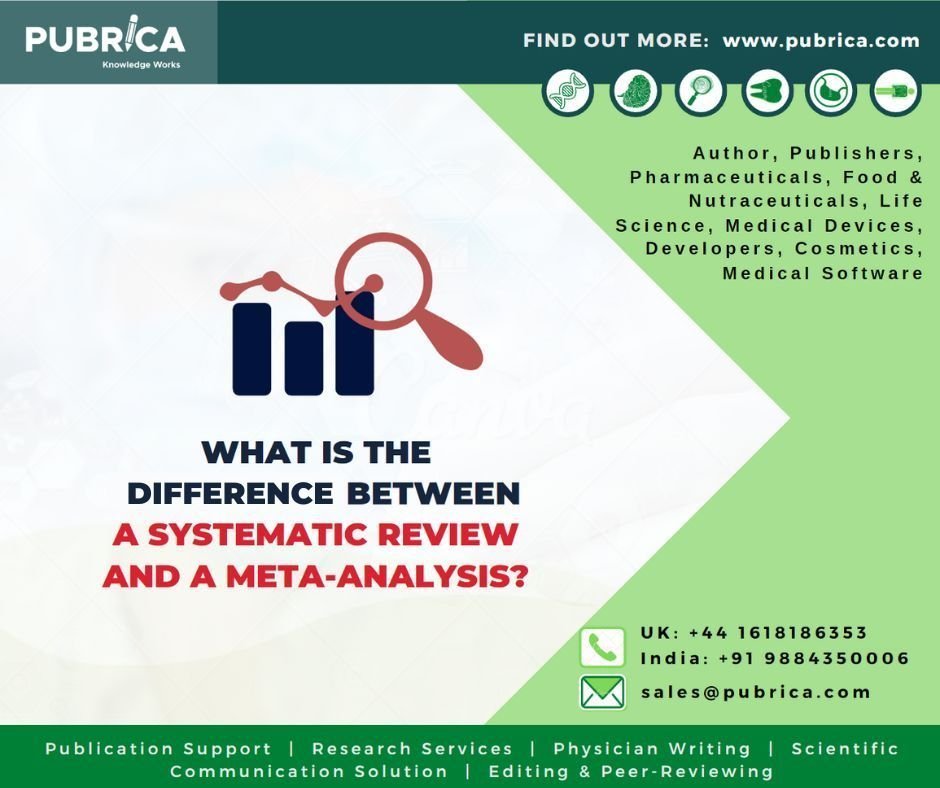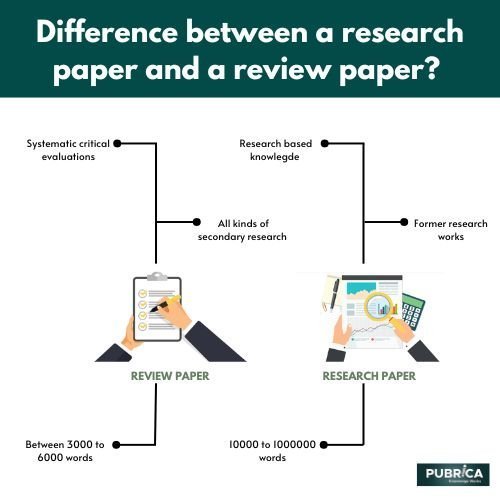
What is the difference between a systematic review and a meta-analysis?
January 20, 2023
Review of the Journal’s Editing: Current State and Future Plans
February 3, 2023In brief
Original research is the foundation of a research paper. Experiments, surveys, interviews, questionnaires, and other types of analysis may be used depending on the field or subject. Still, authors must collect and analyse raw data and perform an original report. The study and interpretation of this data will be the foundation of the research paper. A review article, also known as a review paper, is a piece of writing focused on previously published papers. It does not include any new studies. In general, review papers summarise the existing literature on a subject to clarify the current state of knowledge on the subject.
Introduction
The terms “review paper” and “research paper” are not interchangeable. Both have similar characteristics and may even be related, but some variations exist. For Example, the research paper is an academic writing style in which the student must respond to an important, systematic, and theoretical level of questioning. Similarly, a review paper allows students to interpret what they have learned about the subject matter to demonstrate a thorough understanding by writing. For Example, it can be up to 5,000 words long and come in various formats(1).
Research paper
Regardless of the topic, a research paper has a basic structure: the title page, table of contents, introduction/background information, literature review, methodology, findings, discussion, and conclusions/recommendations. Individually these parts have their own set of writing guidelines. The framework is usually the same regardless of the issue question under investigation. This form of paper typically necessitates a significant amount of time for study and writing. There are several different study forms, each with its own characteristics based on data collection methods, such as interviews, observations, questionnaires, surveys, and experiments. Dependent on the volume and complication of the problem question, the analysis may take anything from a day to years, depending on the hypothesis and intent of the study.
Review paper
On the other hand, a review paper is used to assess students’ awareness after they have learned a few topics. For Example, following the completion of a specific theme, students may be asked to compose an essay, take a test, or complete a task related to that theme. In addition, students are expected to write review papers to show that they have acquired the necessary knowledge and skills in a particular topic.
A review paper may be written in a critical essay on a current or common topic. The student or research scholar must provide their point of view on the subject while still showing an accurate and concise understanding of the topic when it is structured in this way. The article should have some convincing points and proof or data to back them up. Generally, a review paper is written to demonstrate that a student has studied or gained knowledge of a specific topic. The review paper is usually handed in at the end of the semester and accounts for a significant portion of the final exam. The length of a review paper is generally between 3,000 and 5,000 words (2).
| General checklist for an integrative review |
| • Does your introduction include the motivation for the review and explain its contribution to the research field? |
| • Will your review stimulate and guide future work or provide a new way of thinking? |
| • Are your propositions justified by theory and past empirical findings? |
| • Are your propositions justified by theory and past empirical findings? |
| • Have you summarized and synthesised existing Information throughout the text? |
| • Does the ‘added value’ permeate the whole text (not just the conclusions)? |
| • Is the level of detail appropriate, and is the number of examples justified? |
| • is your review understandable and potentially helpful to people outside the immediate subject area? |
The key features of a Research paper
This type of scholarly writing entails delving into a subject concept to address a specific theoretical question. A standard text is 5,000 words long, although it is often longer. The student is expected to interpret and thoroughly analyse knowledge on a given subject. It can be assigned at any time, but most instructors assign it at the start of the semester to give students ample time to collect Information and draft their papers. This type of paper often includes the compilation of primary data and its subsequent analysis.

The Key Features of a Review Paper
A student writes this paper to illustrate their understanding of a specific topic. The job is generally between 3,000 and 5,000 words long. A chosen topic should be thoroughly investigated, and the writer should express their viewpoint on the subject at hand. This assignment is typically assigned at the end of the semester and directly impacts the final grade. Scholarly journals, academic works, lab papers, and textbooks should be used as references for the review paper.
| Options for Added value | Comments | Main Example (output) |
| Empirical insights | A synthesis of what is already known (and maybe what is not) | State of knowledge Caps in literature Weaknesses of methodologies used |
| Methodologies | An analysis of methods used, and their advantages and disadvantages | Overview of dominant methodologies used Pros and cons of procedures used Opportunities for new methods |
| Theories | An investigation of different theories used and their importance. This might cover the implications for the results | Overview of main theories used Strengths and weaknesses Impact of approaches used on results Potential for other theories |
| Caps in literature and a research agenda | This can relate to reviews with an empirical, methodological, and theoretical focus — to explore omissions and limitations in approaches and suggest ways forward | Main gaps in the literature Avenues for future research |
| Relevance for real-world applications | A discussion or synthesis of how helpful the literature is for real-world applications (policy, planning, etc.) —perhaps with the use of case studies | Overview of knowledge available for real-world applications Design Guidance Examples of real-world cases that are (not) underpinned by results from the literature Comparison between cases or countries |
| Conceptual model | Provides explicit structure on how dependent and independent variables are related. Can be presented preceding or following the review part of a paper | The scheme, figure presenting the conceptual model Overview of which parts are (not) well-founded/underpinned by literature |
The Differences between these research and review papers
Despite this, there are certain similarities between the two assignments. First, students should choose a subject that picks their interest in each case. They use the same tools, and the paper structures can be pretty similar. The main distinction between these two types of academic writing is that a research paper can be assigned at any time and does not usually count against a student’s final grade. Another consideration for writing teachers is that a research paper often includes a hypothesis, while a review paper typically supports a thesis assertion.
Furthermore, a research paper typically includes a lengthy list of references. On the other hand, the review paper assignment usually is shorter and does not have a conclusion. Another critical distinction between a research paper and a review paper is that a research paper encourages students to participate in problem-solving activities. In contrast, a review paper assesses the student’s expertise rather than necessarily solving the problem(3).
| Research paper | Review paper |
| It is usually given at the beginning of the semester term | It is generally shown at the middle or towards the end of the term |
| It is aimed at solving a particular problem or answer a hypothesis | It is aimed at checking students’ knowledge after some themes studied |
| It usually contains a hypothesis | It usually supports a thesis statement |
| It does not generally count toward the final grade | It significantly influences the final grade |
| It can take months and even years to complete | It has a limited time frame |
| It cannot be in the form of a review paper | It can be in the form of a research paper |
| It cannot be expressed in less than ten pages | It can be described even on a single page |
Conclusion
The review and the research paper are types of writing in which the first is based on the second. Both are essential parts of literature and writing since they give readers a better understanding of the topic. Reviews and research papers can be obtained from a variety of outlets. Both are different in terms of duration and material. These papers must adhere to a set of guidelines. Anyone wishing to join the world of writing must possess strong reading and analytical abilities, which will aid in writing the review and research article.
About pubrica
Pubrica’s team of researchers and authors develop Scientific and medical research papers that can act as an indispensable tools to the practitioner/authors. Pubrica medical writers help you to write and edit the introduction by introducing the reader to the shortcomings or empty spaces in the identified research field. Our experts know the structure that follows the broad topic, the problem, and the background and advance to a narrow topic to state the hypothesis.
